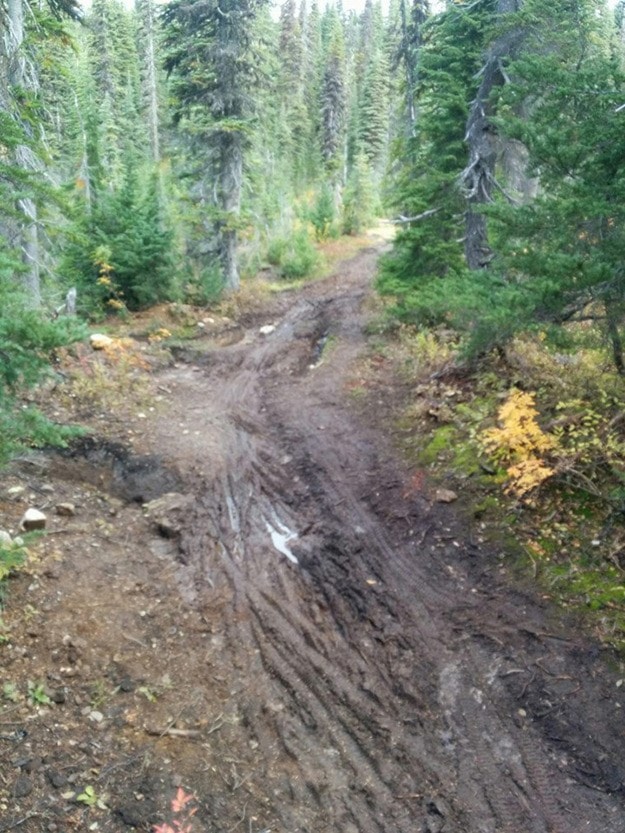If you haven't heard by now, the Frisby Ridge trail is trashed. It's full of deep, muddy ruts and twice as wide as it should be due to people trying to ride around mud holess rather than just going right through them.
I know because I was up there on the Sunday of Labour Day weekend, when the damage was done.
That day, I went up for a late afternoon ride. On the way up the road, I ran into a friend who advised me not to go — the trail was terrible. By that point, I was almost at the parking lot, and having made the drive, I didn't want to turn around. I had heard there were dozens of cars parked there the day before, and I saw many more on their way down the road, and more parked when I got to the end of the road, so I knew it had been ridden a lot.
Still, I got on my bike and pedalled. It was one mud patch after another. There was scarcely a section more than a few hundred metres long that wasn't impacted by deep ruts and damaging ride-arounds. Even though I knew better, I felt committed and kept going. It was a slog getting up. I pushed many sections that I would have normally would have cruised through. I got to the first high point, enjoyed the view, then turned around for the wild descent down the muddy, slippery and fast trail.
I'll be completely honest — it was a blast. I got to the bottom caked in mud. I'll be honest in saying it was one of the most fun descents I had this summer.
Still, I couldn't shake that knowledge that the trail was ruined. It cost six figures to build the trail and I knew the Revelstoke Cycling Association spent money this year hiring a crew to fix sections of the trail with drainage issue. All that work was gone.
I'm friends with Neville Bugden, who led the trail crew, and I know he knows what he's doing. Still, nothing could combat the combined impact of heavy rain and heavy trail use that took placethat weekend. We exchanged messages on Facebook, and he explained that the open canopy means the Frisby Ridge trail sees more rain, and the clay soil means it doesn't get absorbed as quickly.
Water pools, a cyclist goes through it, it gets muddy, then the next person tries to go around, and they just widen the muddy sections.
Of course, there is one way of preventing that — staying off the trail. Last week, there was another social media conversation on the RCA Facebook page about what to do, and whether or not it's possible to close a trail, or get people not to ride it. Frisby Ridge is a destination trail, and people plan their weekends around riding it.
On Friday, I got a call from Darryl Ross, a member of the RCA's cross-country committee. He asked me if I could write something to help spread awareness.
Riding trails in the rain used to be frowned upon, he said, but that is less and less the case as mountain biking becomes more popular.
Since physically closing trails isn't feasible (how do you close it and who police's the closure?), what's needed, he said, is an attitude where riding trails in conditions where they can be damaged is discouraged.
"At the end of the day it's about individuals making decisions for themselves and about the community upholding a set of standards," Ross told me.
It's about shaming people like me into knowing better.
